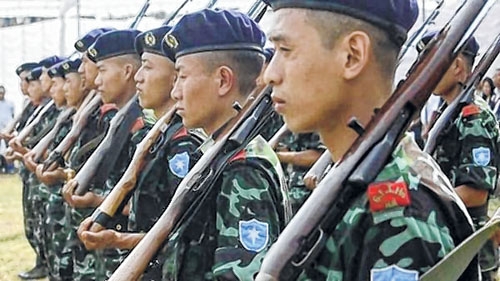Root Cause: Naga assimilation hinges on political representation

Sudeep Chakravarti
Last week I shared some developments about the Naga peace process. These were mainly aspects of disarmament of rebels, rehabilitation of cadres and leaders, and the tricky position leaders, in particular Thuingaleng Muivah, general secretary of the largest group, the National Socialist Council of Nagalim (Isak-Muivah), or NSCN (I-M), find themselves in. They have much face to lose, are crowded by many colleagues scrambling for plum post-peace benefits—a scramble that includes I-M and those from seven other rebel groups and factions—and are pressured by the socio-economic aspirations of the Naga people.
Beyond the churning of wheels within rebel groups that are in parallel talks with the government of India, there is the matter of assuaging Naga pride and honour without offending any other ethnicity in the three contiguous states with Naga homelands.
This lies beyond the impractical matter of a separate Naga flag and constitution that has artfully found its way to some media as a result of NSCN (I-M)’s outreach, a natural response to news about Naga rebel leadership accounting for last-mile hiccups. A separate flag and constitution haven’t been on the table as an effective point since the early stages of negotiations that re-started with some vigour in August 2015. This is in any case largely impossible in the wake of the bifurcation of Jammu & Kashmir and, effectively, the nullification of J&K’s parallel constitution, if not its flag.
There has also been news about the purported contents of the so-called framework agreement for peace that the government of India signed with I-M in 2015, a process later extended to other rebel groups. Here “shared sovereignty" is being placed on the table. This is a calculated and clever attempt to muddy the concept of the “sharing of sovereign powers" within the current federal framework of India.
All this is pressure and counter-pressure. The solution lies in real-world politics and public perception.
Apart from disarmament, the bedrock of a solution is political assimilation: accommodation all around with minimum hurt to the power structure and ethnic mix of Nagaland, and in the states of Manipur, Arunachal Pradesh and Assam, which have Naga homelands. Outside Nagaland, Manipur has the largest Naga homeland.
To bring all this under the umbrella of a Greater Nagaland project has long been seen as folly, even rebels see the impracticality of it.
When ceasefire with I-M was extended to all Naga-inhabited areas, including those in Manipur, in 2001, during the first Bharatiya Janata Party (BJP)-led National Democratic Alliance government, Imphal Valley, home to the state’s majority Meitei people, erupted in widespread rioting and several deaths. It was perceived as the first step to ceding territory of Manipur. The ceasefire was hastily limited to Nagaland. Consequently, a bizarre situation of war-no war with Naga rebels has since continued in such areas.
The solution offered is actually on the lines of one demanded by the United Naga Council of Manipur since at least 2013, that of a constitutional modality to enable existing autonomous district councils in the hill districts of Manipur, home to the Naga people as well as Kuki and Zomi ethnicities, direct administrative and fiscal links with New Delhi. This would maintain the territorial status quo of Manipur and yet offer a solution through constitutional autonomy. A similar template could be followed in the other two states. Alongside, there could be an exercise of delimitation to increase the number of seats in the Assemblies of Nagaland, Manipur, Arunachal, and Assam: ergo, greater political representation alongside greater political assimilation.
All this won’t come without generous application of balm. Infusion of central government funds, showy projects and promise of vast investment in social and economic infrastructure that have flowed to Manipur since 2017, even accounting for the BJP wresting the local government from Congress that year, is no coincidence.
Moreover, the BJP is part of the ruling alliance in Nagaland and runs the governments in Assam and Arunachal. Chief ministers and key BJP leaders of these states would need to be on board. That gives the central government and its negotiators with Naga rebels impressive heft.
There will of course be those who would crash this peace-policy party, warlords among the Naga rebel leadership and those who remain suspicious of any deal, being chief among them. The future is a bit of a slippery slope.
Courtesy Livemint